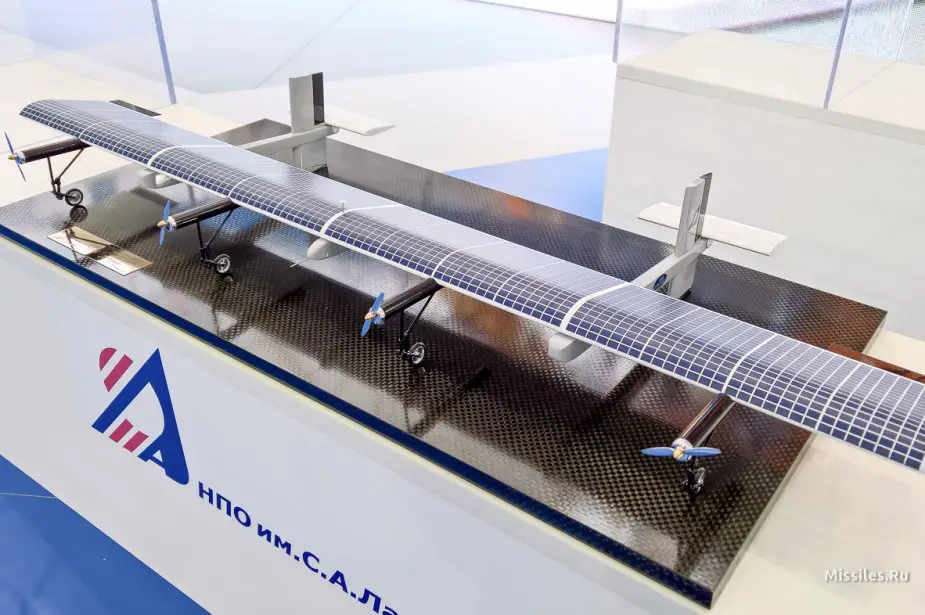Analysis: Russia develops several project of solar drones - take 2
High-altitude drones powered by solar energy offer a prospective guideline in unmanned aviation. Such projects exist in technologically developed countries, including Russia, the Army Standard writes.
Follow Air Recognition on Google News at this link
 Lavochkin Company La-252 drone. (Picture source: Missiles.ru)
Lavochkin Company La-252 drone. (Picture source: Missiles.ru)
The Lavochkin Company created the second La-252 drone. It is nearly 1.5 times bigger and lighter than the first one. The wingspan is 25 meters and the takeoff weight is 115 kg.
The weight was decreased due to better design, new carbon-fiber materials and new solar batteries. Two engines develop a total power of close to 2400 W.
La-252 was designed to fly at altitudes of 18-25 thousand meters. The flight duration is limited by the resource of the systems.
Optimized design and power parameters provide for a heavier payload of close to 25 kg. The drone can monitor an area of 900 square kilometers. La-251 and La-252 were reportedly tested at airfields near Moscow. La-251 made 32 flights and the longest duration was 72 hours.
Both models enjoyed preliminary approval of the Aerospace Forces and the Navy which gives hope for the development of the issue.
Solar drones have to have outstanding characteristics of the glider and subsystems, including engines, solar and electric batteries, communications and payload.
Technologically advanced nations have been developing solar drones capable of long flights at major altitudes. The possibility to do it has been confirmed in practice.
There are several prospective high-altitude solar drones abroad. They include Zephyr of Airbus Defence and Space, Odysseus of Boeing (after procurement of Aurora Flight Services), the project of AeroVironment together with SoftBank, and others.
However, several unresolved problems impede the development of solar drones. Firstly, they have a low 20-24 percent efficiency ratio of solar batteries. There is room for improvement and the ratio can at least double in future. The second problem is insufficient storage density of electric batteries. It reaches 200-250 W-hour/kg in lithium-ion batteries which are affected by the environment. Experiments with lithium-dioxide-carbon and lithium-sulfur batteries give hope for improvement.
Another problem is imperfect design of drones optimized for the missions of solar craft. Tests showed that ground wind and precipitation exert major negative impact on the drone in flight.
New composite materials and design schemes can remedy the situation. Modern design and modeling can accelerate the process.
A breakthrough in any guideline can provide a major edge. The improvements in all guidelines will implement solar drone concept in full and make them operable in various latitudes and weather conditions, the Army Standard said.
© Copyright 2020 TASS. All rights reserved. This material may not be published, broadcast, rewritten or redistributed.


























